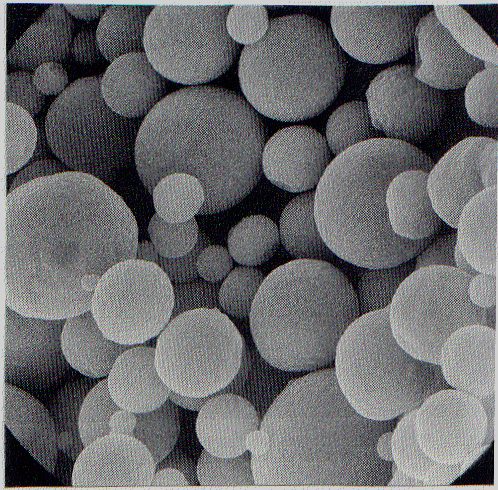The cart is empty!

Kickstart Your Career with Level 1 Coating Inspector Training
Embarking on a career as a Coating Inspector can be a transformative journey for professionals in the industrial coating and inspection industry. If you’re considering this career route, your first step is industry qualification through coating inspector training.
The Institute of Corrosion (ICorr) Protective Coatings Inspector Level 1 course is designed to provide you with the perfect foundation, and is ideal for all those with as little as one year’s experience in the industry. When you take an ICorr accredited Coating Inspector training, you’ll be equipped with the knowledge and skills to succeed, from high-quality training that is relevant to the role.
Here’s all you need to know before you decide which training route is best for you.
Why Do I Need Coating Inspector Training?
Coating Inspector Training is not just about understanding the application of protective coatings; it’s about ensuring the longevity and efficacy of coatings used in various industries to prevent corrosion.
When you consider that corrosion costs the global economy upwards of around £2 trillion each year, you’ll begin to understand just how vital coating inspection training is – completely crucial for maintaining the integrity of infrastructure and equipment, and thereby safeguarding investments and ensuring safety standards.
The ICorr Level 1 Coating Inspector certification is an indispensable asset for anyone looking to secure a role in this field, marking a minimum requirement for those aspiring to become Coating Inspectors.
What Does Coating Inspector Training Level 1 Cover?
Coating Inspector Level 1 training courses that have been accredited by ICorr provide a thorough grounding in all aspects of protective coating application and inspection. Including a practical workshop/assessment (now mandatory), attending the course will enhance your hands-on experience and ensure you are proficient and qualified to:
- Set up and calibrate specific inspection or test equipment
- Conduct tests and perform inspections against written criteria
- Record and classify the results of tests and inspections
- Report results accurately and effectively
What Can I Expect to Learn on a Level 1 Coating Inspector Training Course?
The course content spans a wide range of topics crucial for Coating Inspectors, including:
· Protective Coating Application and Spray Painting
Detailed insights into coating types and application techniques ensure inspectors can oversee projects with confidence.
· Abrasive Blast Cleaning
Understanding the importance of surface preparation and the methods used to achieve the ideal substrate for coating application.
· Coating Inspection and Inspection Equipment
Training on the tools and methodologies for inspecting coatings to ensure they meet the required standards.
· Marine Coatings
Specialised knowledge on coatings used in marine environments, where corrosion poses a significant threat.
Additionally, the course delves into QA, QC, and the basics of inspection, providing a comprehensive understanding of normative documents, corrosion of iron and steel, surface preparation for ferrous materials, and much more.
From learning about the main paint constituents and the drying and curing processes, to grasping the basics of corrosion protection methods and understanding environmental considerations, the course prepares you for all the challenges of the role.
How Does Assessment and Certification Work?
Achieving certification involves passing four multiple-choice tests and a practical assessment. This rigorous evaluation ensures that you have a robust understanding of the course material and can apply your knowledge effectively in real-world scenarios.
Why Does ICorr Accreditation Matter?
ICorr’s accreditation of a Protective Coatings Inspector Level 1 course signifies that the course adheres to the highest standards of quality and relevance to the industry.
When you take and qualify from an ICorr accredited course, it demonstrates that you have gained the knowledge and skills which are applied in the latest industry practices and standards. In short, it’s an accepted and valuable credential to kickstart your career as a coating inspector.
Train as a Coatings Inspector Your Way
We all have different learning styles, and different abilities to undertake training. Which is one reason we have partnered with two training providers to deliver the ICorr Coating Inspection Level 1 courses.
IMechE Argyl Ruane delivers classroom learning of the highest quality. This is a five-day course with one day of examination. You’ll be able to take the course at either IMechE Argyll Ruane’s state-of-the-art training facility in Sheffield or Dunfermline. Each of these locations has multiple classrooms with the latest equipment, as well as breakout and refreshment areas.
If you prefer online courses to learn at your own pace and in the comfort of your own home, the Corrodere Academy will suit you perfectly. You’ll get 12 months’ access to 40 hours of interactive online course content, with an online practical workshop and final exams.
Coating Inspector Level 1: The Final Assessment
If you are looking to kickstart a career as a Coating Inspector, the ICorr Protective Coatings Inspector Level 1 certification is the gateway to a rewarding profession. Whether online classes or classroom learning, the comprehensive training that you receive covers everything from the basics of corrosion and coating application to specialised inspection techniques and standards, meaning you can be rest assured that you’ll be well-equipped to take on the challenges of this industry-critical role.
ICorr accreditation is a testament to the quality and depth of training provided, and ensures that certified inspectors are recognised and valued across industries for their expertise in coating inspection.
Want to know more? Contact our admin team by email today to have all your questions answered.

